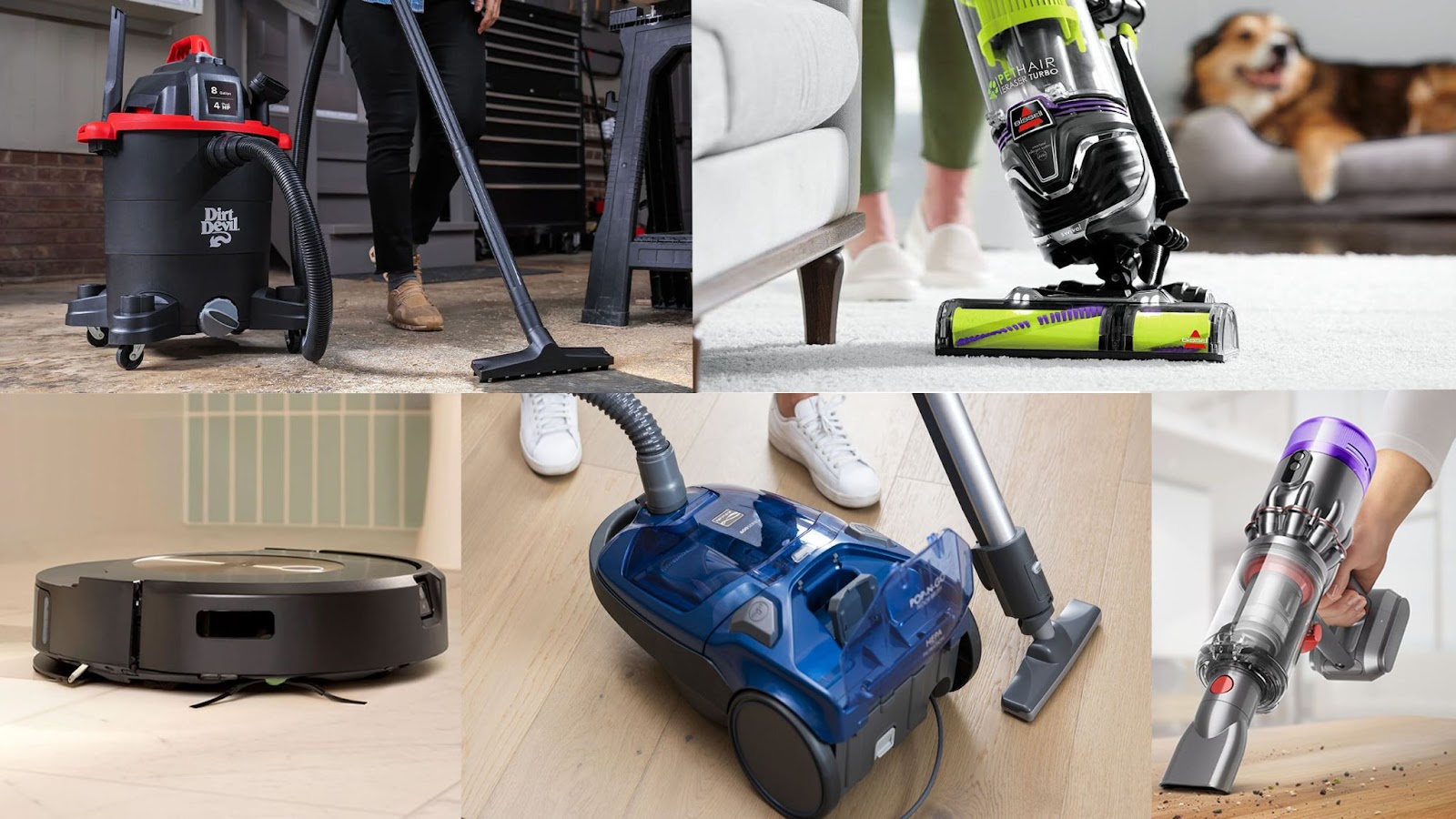Having the right vacuum for the job spells the difference between a quick chore and a frustrating task. I’m going to go over the broad strokes of six major vacuum cleaner categories.
This overview will include what they excel at, what they struggle with, and what types of households would benefit from having one. However, if you don’t have time to get into the weeds, here’s everything you need to know at a glance:
Upright Vacuums
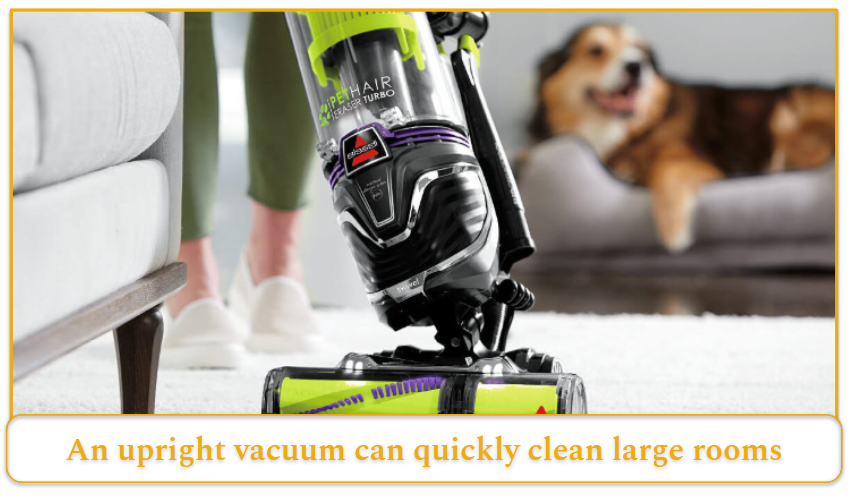
An upright vacuum can quickly clean large rooms
- Upright vacuums focus on cleaning floors.
- They are usually hose-less.
- Uprights tend to have wider brush heads compared to other designs. This increased width translates to a larger cleaning path, making it easier to clean more floorspace quickly.
- It’s also easy to adjust an upright from dealing with hardwood to carpet. It either automatically adjusts or you just need to turn a knob.
- They’re good for people who have a lot of floor to clean and rely on other tools for their furniture and countertops.
Canister Vacuums
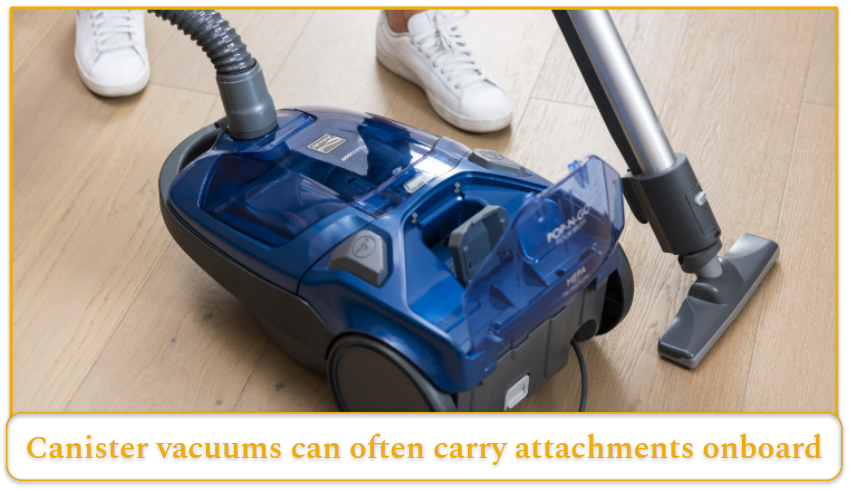
Canister vacuums can often carry attachments onboard
- With canister vacuums, the motor (the canister) is separated from the brush head and handle by a hose.
- This design allows the brush head to be easily pushed into a small area, get under furniture, and overhead.
- On the higher end, canisters often come with more attachments than other designs because they can be stored inside the motor section.
- Canisters can handle almost any vacuuming situation. They are suited for cleaning upholstery and flooring.
- It can be cumbersome to drag the canister unit around.
Stick Vacuums
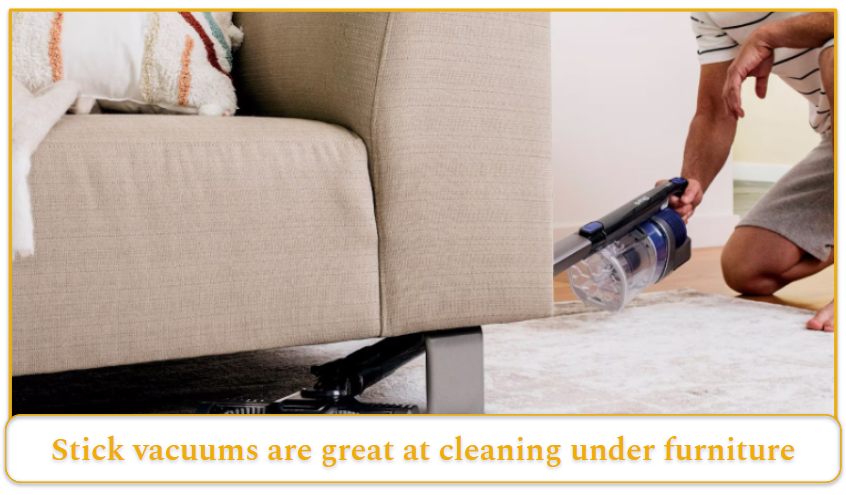
Stick vacuums are compact and excel at cleaning under furniture
- Stick vacuums are defined by their slim and lightweight design, usually a scaled-down version of an upright.
- It makes them ideal for cleaning tight spaces and small homes.
- Many models also can be converted into a handheld for cleaning countertops and car seats.
- If you have a large house, it may take multiple charges to clean everything on the highest settings.
Handheld Vacuums
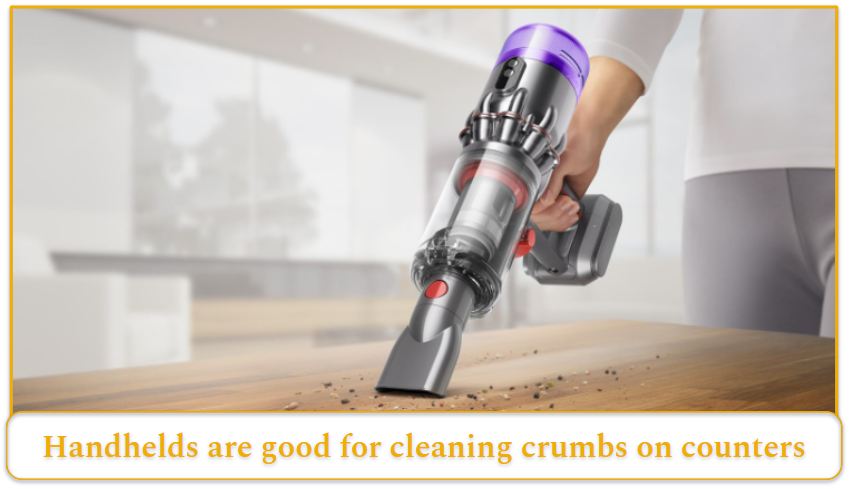
Handhelds are great for cleaning crumbs off countertops
- Handheld vacuums are compact enough to sit atop countertops and desks.
- Usually, they are battery powered and designed to clean up small messes like crumbs.
- While handhelds lack power, they excel at getting into tight spaces like between cushions.
- Overall, they should be used as supplementary vacuums.
Robotic Vacuums
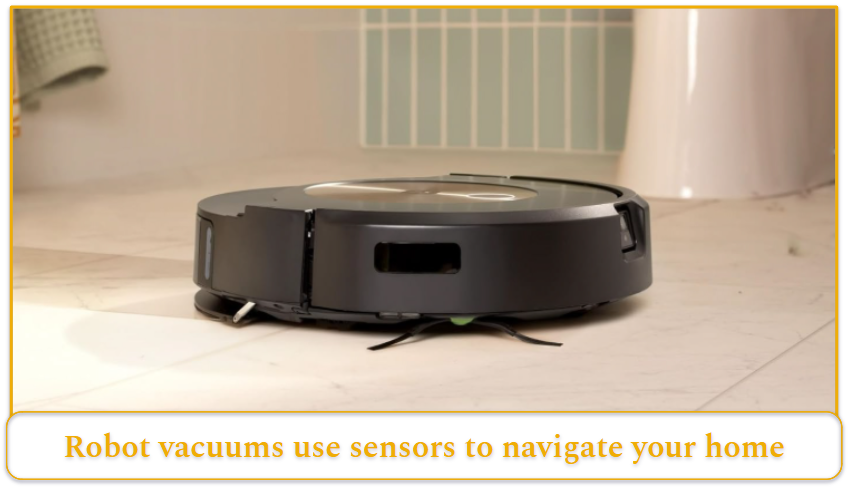
Robot vacuums use a number of sensors to navigate your home
- Robot vacuums are self-contained devices that use sensors to navigate and side sweepers to clean.
- The sensors can vary from infrared beams to cameras.
- Many robot vacuums can also be programmed via an app to clean specific rooms and avoid sensitive areas like near pet bowls.
- More affordable robot vacuums tend to have poorer navigation.
- On the high end of the spectrum, robot vacuums can offer many useful features like the ability to empty themselves or stream what they see to your phone. Due to their advanced navigation, they may shy away from furniture or other obstacles.
Wet/Dry Vacuums
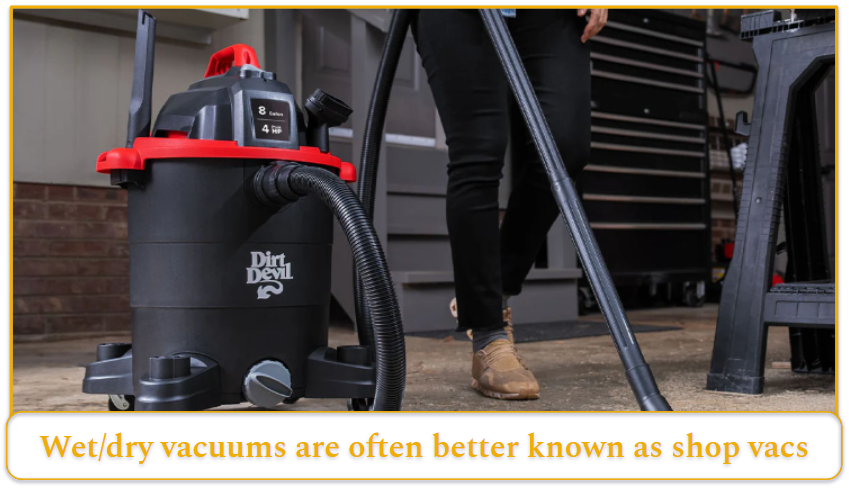
Wet/dry vacuums are often better known as shop vacs
- Wet/Dry vacuums are also known as shop vacs.
- These vacuums are designed to be able to clean up water spills and pick up large debris.
- Wet/dry vacuums typically come in two different forms: uprights designed to clean small messes in the kitchen, and larger canister versions geared toward cleaning up garages and basements.
- If you ever wanted to clean up spills in the kitchen without a mess of paper towels or needed a vacuum that lives in the basement, a wet/dry vacuum might be exactly what you need.
How to Choose the Right Type of Vacuum
Before you choose your next vacuum cleaner, there are a few things you should consider. A good rule of thumb is to ask yourself what annoyed you about your last vacuum cleaner.
For example, my old vacuum cleaner was a cordless stick vacuum. While I loved how easy it was to use it, it really didn’t work for my home because the battery life never lasted long enough. Plus, it couldn’t always handle my plusher carpets. So, the next vacuum cleaner I got was a canister, and I’m so happy with it.
Here are a few more things to think about when buying your next vacuum cleaner:
Budget
If you have a more modest budget, you should consider uprights or canister vacuum cleaners, since they offer best value for money (they can clean most surfaces easily). Robotic vacuum cleaners and wet/dry vacuum cleaners are usually expensive (especially if you want a really good one).
Handheld or stick vacuum cleaners are less expensive too, but usually not good for the whole house.
If your budget is higher, then you can look into robotic vacuum cleaners. However, you should also consider other factors (listed below).
Floor type
If you have hardwood floors or tiles in most places in your home, then an upright would work best for you. A robotic vacuum cleaner would work too, but you have to consider your budget as well.
Very plush carpets are best cleaned with canister vacuums (though transitioning between hardwood floors and carpets can be tricky).
Other things you want to clean
If you want to clean more than just your floors, then you should avoid upright vacuum cleaners. They’re generally best used on floors.
For people who have smaller homes and want a vacuum cleaner that can clean the floors, countertops and upholstery, I’d recommend a cordless stick vacuum cleaner. They can often turn into handhelds and even come with mop attachments.
Canister vacuums are also good for cleaning different surfaces, but they can be cumbersome because of the hose.


